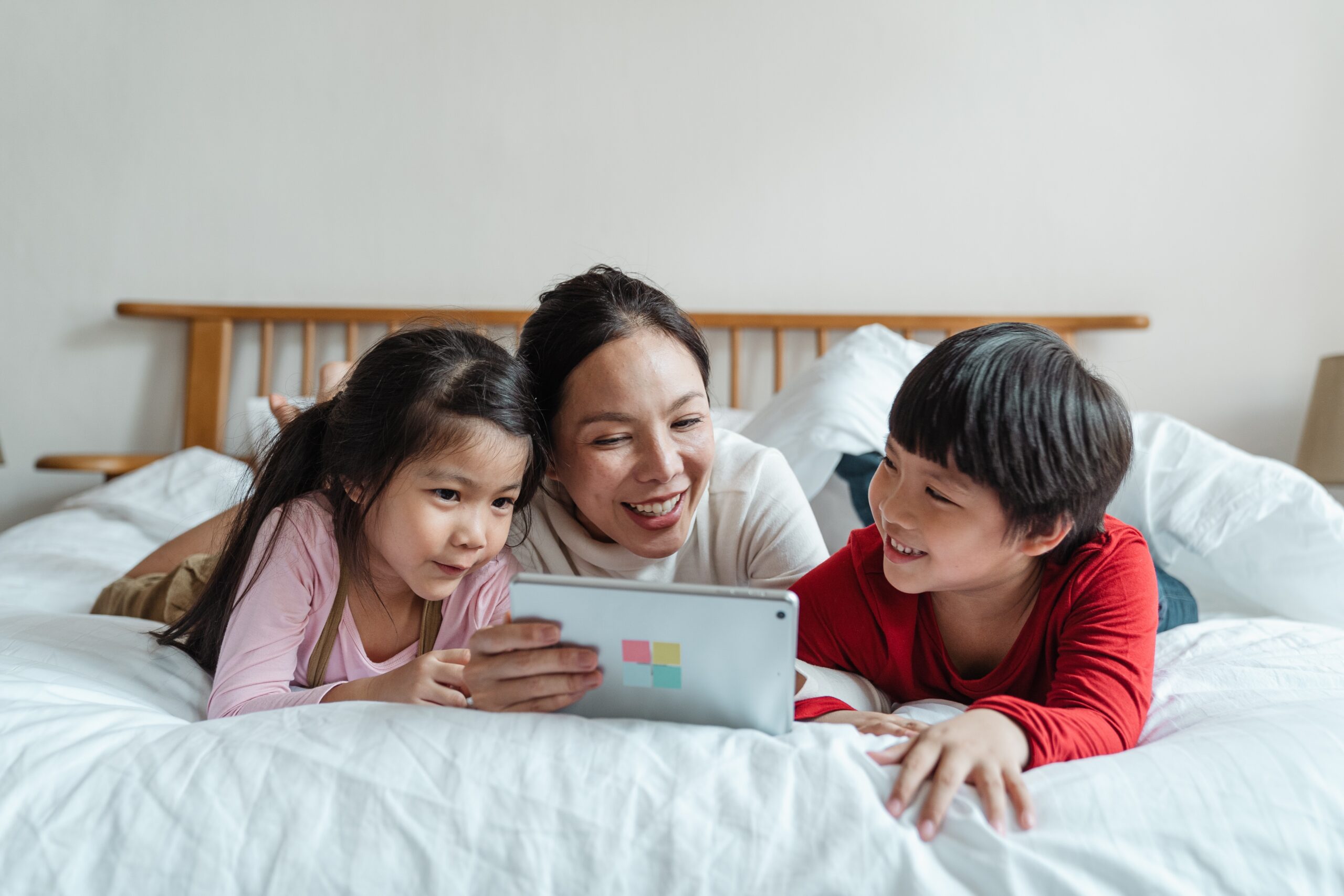
In this article, we recommend five specific and measurable actions you can implement to take your DLL/ELL program to the next level in 2023
1) Build background knowledge.

2) Gamify the Learning
Students tend to value “fun” within the classroom. The data suggests that “fun” promotes the motivation and engagement of students. Furthermore, it fosters a love of learning among students. (Stoffers, 2011)
Learning can and should be fun! Using technology and learning games in your classroom can help you ensure that students look forward to your class! Gamified learning can also be as simple as creating a beautiful virtual scenery in the forest while students select the correct answers (click on the picture to try a reading game).
Although gamification seems to be a recent trend that started to take flight in 2010, teachers have used small awards, such as stickers, as motivation boosters for many years.
3) Use Multisensory Content.
Multisensory instruction is a way of teaching that engages more than one sense at a time.
Studies have shown that people remember 20% of what they hear, 30% of what they see, and 70% of what they see and hear.
In most multisensory lessons, kids engage with the material in more than one way. Little Sponges program covers several topics and vocabulary groups in a way that’s multisensory, fun and contextually relevant for young children and it leverages the power of real-life, read-along videos, bilingual characters, songs, and interactive games to help young children become bilingual.
4) Incorporate and support the child’s home languages.
Supporting home language skills is one of the most effective ways to boost the learning of a second language for young children. It’s important to expose DLLs to English and their home language in thoughtful and strategic ways.
The strategic use of your students’ L1 when you are teaching L2 is a great way to provide “comprehensible input” and help your students learn faster by transferring knowledge from L1 to L2.
Little Sponges supports this by providing activities in L1 and L2 that enable students to bridge between their first and second language and improve comprehension when learning new content. Little Sponges program draws students’ attention to cognates which builds a bridge between the native language and the target language and helps students learn new vocabulary faster.

5) Facilitate Parent Engagement

According to an NEA policy brief, the evidence of higher student success rates with family engagement “holds true for students at both the elementary and secondary level, regardless of the parents’ education, family income, or background—and the research shows parent involvement affects minority students’ academic achievement across all races.”
Educational technology programs such as Little Sponges are fantastic tools that make it easier than ever for parents to be involved in their child’s education. Because Little Sponges is available for parents to use at home on devices such as computers, tablets, and smartphones, the student will not be leaving their language learning at school. Little Sponges also provides parent engagement tools such as parent letters, “how to” videos and live training sessions for parents.
Resolutions for Parents
We all believe that teaching our children more than one language will have a positive impact on their lives. This is the perfect time to make this new year a great language-learning year.
Educational technology programs such as Little Sponges are fantastic tools that make it easier than ever for parents to be involved in their children’s education. Since Little Sponges is available for students to use at home on devices such as computers and tablets, children do not have to leave their language learning in the classroom.
Here’s a list of important resolutions for any parent trying to make proactive efforts in 2023 (and beyond) to advance the bilingual ability of their children.
1) Prepare to Be Involved

In a study conducted by the University of Nebraska Foreign Language and Psychology departments, a team of Ph.D. researchers concluded: “it is likely that the programs that do best will be those that encourage parents to not only participate but to lead.”
Take the initiative to ask your child’s teacher what you can do to help your child. While this applies to all academic areas, it is especially important in language acquisition, which is the building block for later learning.
We know from experience that there are various factors that can get in the way of a family’s ability to be active in their child’s education. Some of these include a lack of time, a language barrier, or the simple fact that it can sometimes be difficult to motivate children to study and do their homework.
Little Sponges is built to help bridge these gaps and solve these problems between a child’s education in the classroom and their education at home.
2) Make it a Daily Part of Your Life

Repetition is the key to learning, especially when it comes to language acquisition. However, it can be difficult to provide a lot of repetition and keep your children engaged. You can utilize Little Sponges learning adventures to integrate the vocabulary into your daily tasks. For example, if your child is currently learning about fruits and vegetables at school, review the Garden Adventure learning module together and ask them to name fruits and vegetables in both languages as you stroll through the grocery store.
You can also listen to the Dentist song in the Little Sponges program before or during brushing your teeth. Your child will learn how to brush and floss properly while memorizing new words and phrases in his/her second language. It can be a lot of fun for the whole family! Then, ask your child: “How do you say teeth in Spanish (or another language)?” This will encourage your child to recall and use vocabulary in multiple situations and make it part of his/her active vocabulary.
3) Utilize Technology

We understand that learning and using new technology can be challenging and overwhelming. You only want what’s best for your child’s well being, and this likely includes limited screen time. While this is generally a good rule, the American Academy of Pediatrics states that when used correctly, media usage in an educational context exposes children to new ideas, helps with knowledge acquisition, and provides increased opportunities for social contact and support.
Teach your children that technology is a great tool for learning when used appropriately. Using Little Sponges program, young children learn technology and language skills at the same time. They also learn how to learn in general because the program gives them personalized feedback and teaches them how to learn from their mistakes. Using Little Sponges program parents can facilitate learning at home even if they don’t speak the language because the program includes audio, print, visuals and scaffolding to ensure children receive “comprehensible input”. It’s like having an intelligent tutor at home.
4) Emphasize the Benefits

At first, it may be difficult for your child to understand the value of learning two languages. This can be especially true for children whose home language matches that of their school and community. In their minds, for example, they can already talk to everyone in English, so why should they learn German or Chinese? To combat this, find ways to reinforce that what they’re learning has real-world value, on a scale they can understand.
For example, create situations where children can use their new language skills and see real-world applications. For example, take them to the Chinese restaurant and ask them to order in Chinese or go to the international food market and ask them to read product labels in their second language. Traveling is also a great way to show your children the value of knowing another language. They realize that it’s a super power! As Nelson Mandela once said, “When you talk to a man in a language he understands, that goes to his head. If you talk to him in his language, that goes to his heart.” As we learned during our travels, a few words can go a long way in showing that you care and appreciate the other person!
We have compiled the benefits of bilingual education for young children in a presentation that you can use for your parent engagement meetings. Please click below to download.


